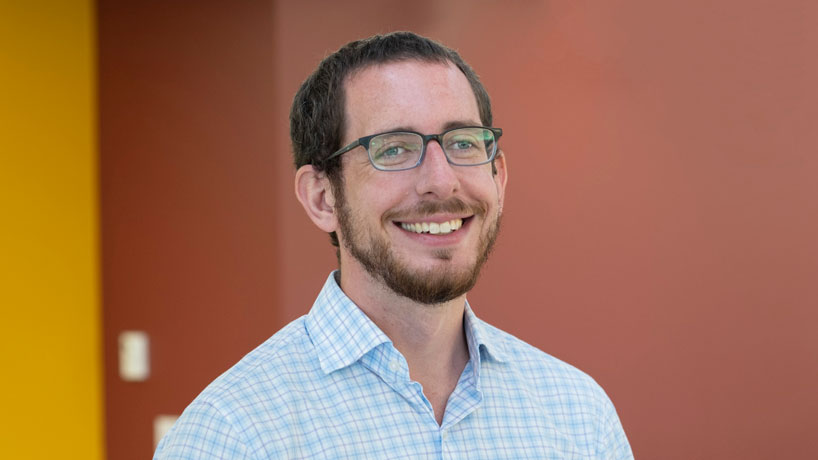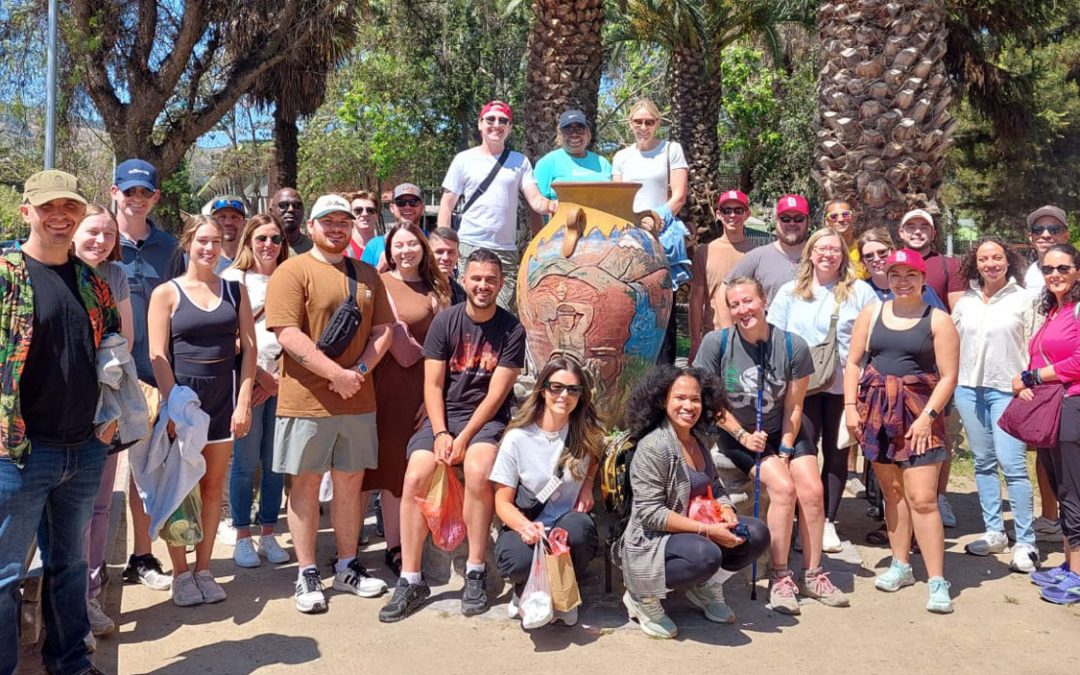
Ryan Carpenter, assistant professor of clinical psychology at the University of St. Louis–Missouri, received a grant from National Institute on Alcohol Abuse and Alcoholism for his research on maladaptive behavior in people consuming alcohol while also receiving opioid treatment. (Photo by August Jennewein)
Approximately 134 people die each day from an opioid overdose in the United States, and Missouri has been heavily impacted by the national opioid crisis.
According to the Missouri Department of Health and Senior Services, drug overdose is the No. 1 cause of death in Missouri among adults ages 18-44. Over 70% of those deaths are due to opioid use. Deaths due to the synthetic opioid fentanyl have increased.
One factor contributing to the crisis that is often not discussed is how alcohol consumption in conjunction with opioids can increase the risk of death. It reduces one’s short-term tolerance to opioids and therefore makes them more lethal.
Ryan Carpenter, an assistant professor of clinical psychology at the University of Missouri–St. Louis, is conducting research on the behaviors that lead those in treatment for opioid addiction to also drink alcohol despite the health risks.
“My research broadly is an understanding to maladaptive behaviors as they occur in people’s actual, everyday lives,” Carpenter said. “I’m a clinical psychologist. A lot of my work is focused on using technology to have people tell us about what’s going on day to day, moment to moment.”
He also examines substance use and the effectiveness of mobile technology to treat or prevent it.
“Four or five times a day, we’ll ask, ‘How are you feeling right now? How is your craving right now? Are you feeling an urge to use? Or have you used since the last prompt?’” Carpenter said.
Carpenter’s current research examines individuals’ every day maladaptive behavior in people consuming alcohol while also receiving opioid treatment by taking buprenorphine. Participants use apps on their smartphones to report behaviors throughout the day.
One of the intended outcomes of this research is to understand addictive behavior. This data is important in understanding how to treat addiction effectively. The other intended outcome is to see how technology can successfully fit into addiction treatment.
Carpenter’s five-year, multi-phase study, titled “Project BEST (Better Experiences in Substance Treatment),” received $805,849 in funding from the National Institute on Alcohol Abuse and Alcoholism. It entails interviewing patients and providers in the community to understand why many people receiving buprenorphine drink alcohol. That data will be used to develop a treatment meant specifically for these patients to help them drink less.
“We know that a lot of people who are receiving buprenorphine, about a third of them are having significant problems from their alcohol use,” Carpenter said. “So, even though they’re getting treatment for the opioid use, they’re still having problems that are in some way related to the fact that they’re drinking.”
Carpenter’s work with the 40 diverse participants in the City of St. Louis, north St. Louis County and Troy, Missouri, will also try to examine how alcohol use contributes to opioid death among Black men.
“Around 2017 a lot of Black men who used heroin for a long time had stability, and what they were doing was working for them in the life they were living,” Carpenter said. “Then fentanyl came on the market and to see all of a sudden a number of overdose deaths among these Black men because they’re suddenly, without realizing, using much more than they were used to.”
The increase in fentanyl related deaths among Black men can be in part be attributed to the drug being more prevalent in Black communities and treatment centers being inaccessible. Carpenter is aware of the racial and socioeconomic disparity between the Black and white communities regarding opioid deaths and treatment.
“The cynical take is we got really interested in treating opioid problems because white, suburban kids are overdosing, so now we care,” he said. “We’ve made progress, and we have treatments that work and things that can reverse an overdose, but they’re not reaching the urban areas nearly as well.”
Carpenter aims to develop innovative interventions that will help substance users quit. He wants to make them accessible to those who have trouble getting to a treatment center, which will also address disparities in treatment. He also hopes to develop interventions that will be more conducive to many substance abusers’ lifestyle and socioeconomic constraints.
Study participants’ input has been critical in providing a better understanding of what kind of treatment would be most effective. Armed with data and awareness, Carpenter has set out to offer a solution to an aspect of the opioid crisis he hopes will transform lives.
“We’re trying to understand how can we build a brief intervention that will be the most helpful to not just white people and not just people who are in urban areas,” Carpenter said, “but hopefully be the most helpful to the most people.”














